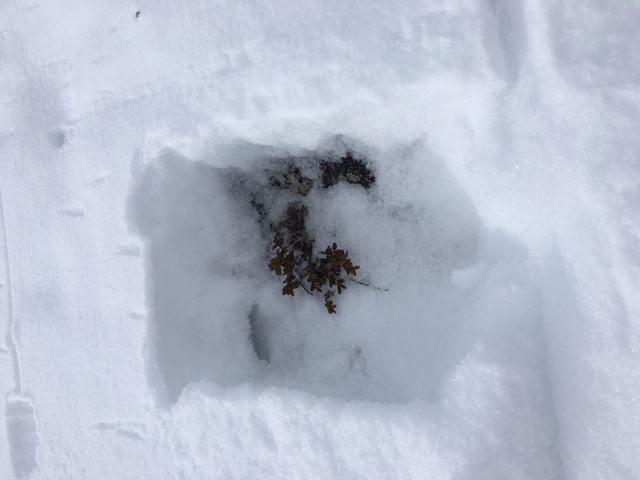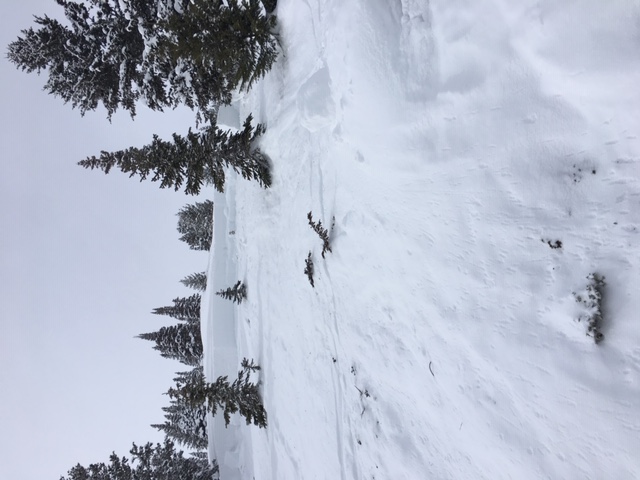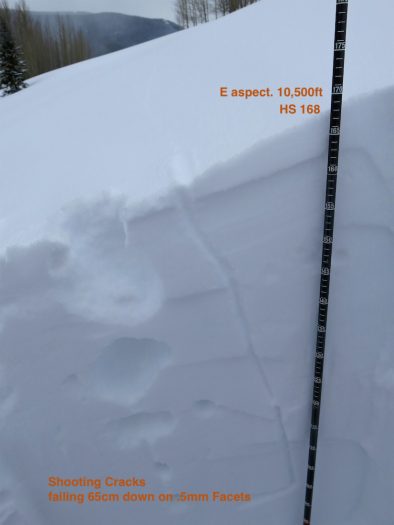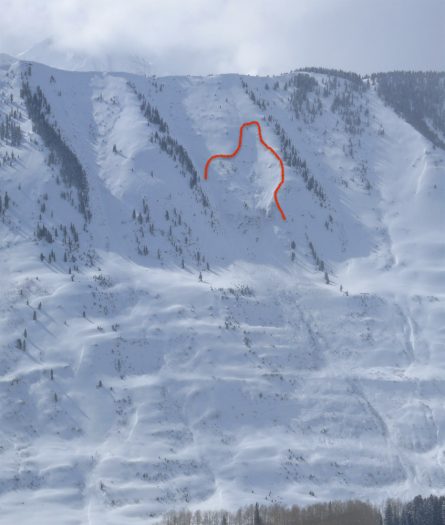Location: Cement Creek Area
Date of Observation: 02/18/2019
Name: Evan Ross
Subject: Shooting Cracks on Easterly Slopes
Aspect: North East, East, South East, West
Elevation: 9,000-11,700
Avalanches:
There were many old, small, natural avalanches in the lower Cement Creek drainage where the HS is the shallowest. Grassy slope style avalanches. These avalanches were primarily on wind-loaded terrain features that faced south to east.
Cement Mountain’s north bowl above treeling had a couple of natural avalanches. The largest was in the D3 range and looked to have failed during the Valentine Storm. A more recent D2 looked to have failed during the 1/16 Storm on a NE portion of the same bowl.
Weather: Partly cloudy sky became overcast by 11am. Calm winds. A few very light flurries of snow.
Snowpack: Quieter snowpack then expected, but still some obvious red flags to instability. Mostly traveled on westerly and easterly facing slopes. Kept my exposure to the avalanche problems low. Visibility was also poor with flat light. All travel was via snowmobile so the weight and the punch was there. Mostly covered ground observing the presence of signs to instability and overall structure, VS single snow pit data points. The snow pony can travel a lot of ground quickly.
The most significant observations and red flags where observed on Easterly terrain. Multiple slopes in the 9,500ft to 10,500ft elevation band produced shooting cracks on slopes 33 degrees or less in steepness. Digging into those cracks showed failures on very small .5mm facets in the middle of the snowpack, or the large grained depth hoar about 30cm’s above the ground. The slopes that produced shooting cracks tended to have slightly more of a NE tilt to them. Traveled on many other NE to SE facing slopes from 9,500ft up to 11,700ft with no obvious red flags to instability. So in the big picture, where the avalanche problem was most sensitive, it didn’t feel very widespread. That may be a true statement, but we should also keep in mind the results could be due to the keeping my exposure relatively low, as getting a full depth result on a bigger slope obviously wouldn’t be worth it. HS in this terrain was generally in the 135 to 165cm range.
Also traveled on a bunch of westerly facing slopes on the other side of the valley. Not a single sign to instability. Previous snowmobile tracks in the terrain also traveled aggressively on some steep slopes below treeline and they didn’t produce any results. CT results in one pit on a westerly slope at 10,200ft produced hard, sudden results on the basal depth hoar and unrepeatable results on small grained facets in the middle of the snowpack. HS was 130cm.
Boot Pen throughout the day was generally 35 to 45cm’s. The Valentine Slab has some good strength to it. Effort is needed to punch through the strong snow to the weaker snow below.
Photos:



























